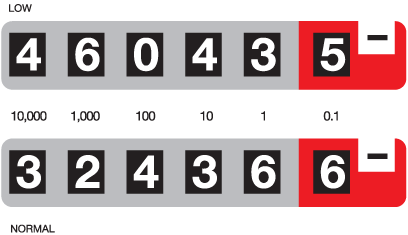The electric use varies from household to household, depending upon the size of the home, number and type of appliances and how you use them. Your electric meter keeps track of all this for you.
An electricity meter provides a window into your electricity consumption, and thus it is crucial to understand how to take accurate measurements. You can look at your own electricity usage by learning to read your own meter. Electric meters are not difficult to read and can provide you with information about your energy conservation efforts. The utility representatives use an electronic device to read your meter each month unless it gets inaccessible due to various reasons such as locked gates, unrestrained dogs, heavy foliage or inclement weather.In case a meter cannot be read, an estimate is made by the computer. Any difference between the estimate and your actual energy is automatically adjusted on your next billing, provided actual readings are obtained.

The electrical meters are located on the outside of your home, between the power line coming from the pole and your electrical panel inside. They record the amount of electricity that you and your family are using. It is vital to understand how to read your electric meter so that you know how much electricity you are consuming.
Reading a digital electric meter is actually quite simple, you just need to know what you are looking at. You can also contact your local utility company for instructions on how to read your digital electric meter. Here is a guide for you:
-
Understand the different parts of your meter: A digital electric meter records how much electricity your household is using electronically. Thus, a digital electric meter is much simpler to read as compared to a traditional meter since it has fewer readings to decipher. Unlike traditional analog electric meters, many digital meters transmit your meter reading wirelessly to the electric company through radio frequencies. This means that you will not have a meter reader come to your house to read your meter. If you prefer to keep your traditional meter, it may be possible in some municipalities to avoid having a new smart meter installed.
-
Read the numbers on your meter: Your electric meter should have a digital readout that gives you one long series of numbers. The exact configuration on this readout will vary depending on the manufacturer. Contact your electric company to get information about your meter if you cannot figure out how to read it on your own. Your electric meter may have a few other numbers displayed including the power status for the meter and reference numbers for the electric company. Remember to only pay attention to the large central string of numbers when trying to figure out your electric usage.
-
Calculate the kilowatt hours that you have used: Digital electric meters do not resend after every reading. This means that in order to calculate the number of kilowatt hours that you have consumed, you need to keep track of consecutive readings. Subtract the current reading from the last reading you were billed for to get the most recent kilowatt hours used.
For more information, you can call on Eon Contact Number and get in touch with its dedicated team.

